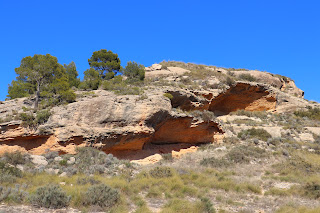Visiting Parliament

I've always been relatively interested in politics, not in any deep intellectual way, but in the way of knowing which side I was on in any political argument. When we first arrived in Spain, when there was hardly any Internet, when news came in newspapers and on TV and radio, keeping up was tricky. I could read the Spanish papers, finger pointingly slowly, but the spoken news was, initially, incomprehensible gabble. I was quite worried that I would turn from informed to stupid. For months I copied down the names, to try to make sense of the weekly political round-up in English in the Costa Blanca News. Nowadays I know, reasonably well, what's going on politically in Spain but I haven't a clue about the UK. This year there will be a general, local and regional elections in Spain. This May will be our fifth set of local elections here. We're on nodding terms with a few of the local councillors. One of those is the Pinoso Mayor, Lázaro Azorín. Now Lázaro as well as being o...






.png)

